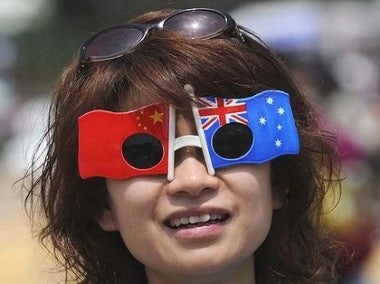Chinese Tourists Expected To Number 100 Million Globally By 2020#

Australian tour operators and retailers recognize the importance of China's growing outbound tourism market (Photo: SMH)
The UK and US might not be doing enough to attract China's increasingly far-flung outbound tourists, but if Australia plays its cards right, it stands to "reap the benefits of a boom bigger than the Japanese influx during the 1980s." With the number of visiting Americans and Japanese dwindling in recent years, due to economic woes and natural disasters, Australian tourism authorities have looked to emerging markets like China as a source of hope. According to the Australian Bureau of Statistics, visitors from China for the first nine months of 2011 jumped 23 percent, nearly offsetting losses from the US (-10.6 percent) and Japan (-16.3 percent), and Tourism Australia recently noted that the China inbound market in 2010 brought in $3.26 billion (US$3.37 billion). By 2020, the bureau pointed out, Chinese tourists could contribute anywhere from $7-9 billion (US$7.2-9.3 billion) annually to the Australian economy. As the Courier-Mail suggests this week, the Australian tourism industry's greater reliance on Chinese tourists underlines Australia's broader economic reliance on China, which is spearheading the majority of the current mining expansion in Queensland.
But boundless optimism aside, the Courier-Mail adds that projections of a $9 billion economic windfall are not guaranteed. Australian tour operators, hoteliers and restaurateurs have to get it right, or Chinese tourists will take their business elsewhere. From the article:
Queensland Tourism Industry Council chief executive Daniel Gschwind said dealing with the influx was a big challenge because Chinese visitors were as culturally diverse as parts of Europe.
He said word-of-mouth promotion was a major factor in China.
The Chinese were also less likely to move away from the major cities such as Cairns, Brisbane and the Gold Coast and many travelled just to buy major fashion labels, which were more expensive in China than here.
Mr Gschwind said Australia was short of Mandarin-speaking guides and there had been issues around shopping rip-offs where tour groups were herded towards shops that paid kickbacks to guides.
While adding perks like Chinese breakfasts and slippers and green tea may help hotels in Australia gain points with Chinese tourists, as in the UK the majority of Chinese tourists heading to Australia are focused on shopping rather than sun and surf. As such, Tourism Australia would be well suited to advise retailers to beef up their bilingual staff and begin accepting China UnionPay bankcards. Interestingly enough, while we hear plenty of stories about high-end boutiques throughout Europe hunting down Mandarin-speaking staff, Australia appears to be in the midst of an impasse on Asian language education. As the Australian noted this week, the country's younger generation "may be more comfortable with the idea of Australia's Asian future, but they are no more willing to learn the region's languages." The Department of Foreign Affairs and Trade, Australia's channel to Asia, takes in more graduates with French than with Mandarin and Indonesian combined.
If Chinese tourists find communication to be both frustrating and futile in Australia, the country may find it harder (or even impossible) to offset its diminishing popularity among inbound American and Japanese tourists, and those $9 billion dreams could come crashing down to earth within a few years.